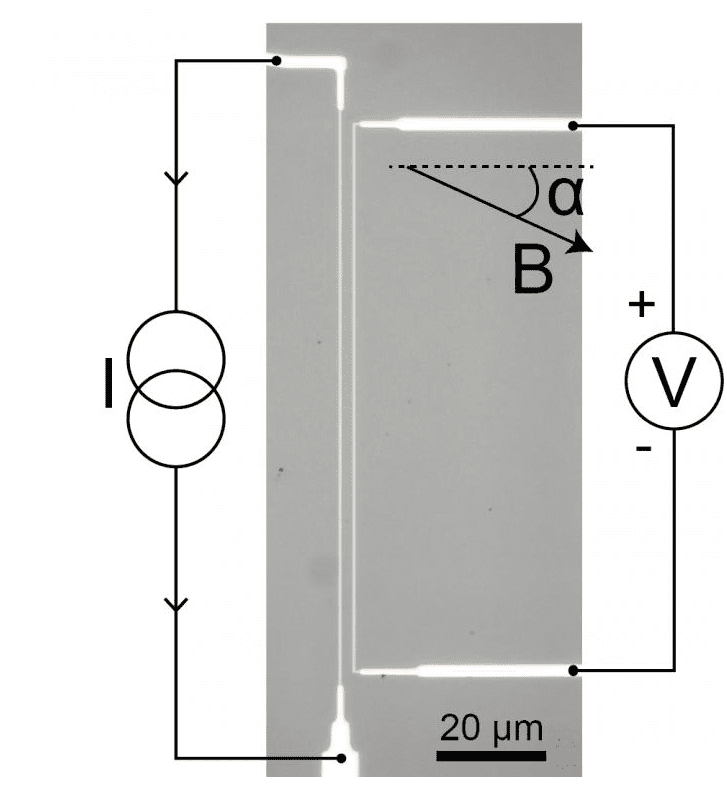A team of Dutch and Belgian researchers demonstrated an electric circuit coupled with a magnetic insulator. The circuit uses so-called ‘spin waves’ instead of electrons to transmit information, something that was considered unpractical until not too long ago. The findings could help lead to a new class of electronics which are far more efficient since there’s less heat loss.
Spin is a fundamental property of electrons that describe their magnetic moment. It’s more of an analogy, however, since electrons don’t really spin, not like a ball or planet at least. Instead, these angular momenta are discrete, quantized in units of Planck’s constant divided by 4 pi. When an electron with a spin opposite relative to the magnetization enters a field, it causes a perturbation in the magnetic material called a spin wave.
The collaborative effort between University of Groningen, Utrecht University, the Université de Bretagne Occidentale and the FOM Foundation showed for the first time that it is possible to transmit electric signals in an insulating material. This breakthrough was achieved by introducing spin waves in an electric circuit by carefully tweaking the circuit’s geometry.

Previously, such a circuit was deemed impossible since you couldn’t introduce a perturbation important enough to generate a spin wave. The researchers were creative, however, and exploited the spin waves that are already present in the material due to thermal fluctuations. Specifically, they made a 200 nanometre thin layer of yttrium iron garnet (a mineral and magnetic insulator, YIG in short), with a conducting platinum strip on top of that on both sides. While charged electrons could travel along the platinum layer, they were blocked by the insulator. However, at the interference between the two electron collisions transferred their spin to the YIG magnetic insulator. Ultimately, this generates a spin wave in the YIG, scientists report in Nature Physics.
What’s interesting is that when the spin is transferred – effectively when the spin wave is generated – heat is also transferred across the whole interference. This means you can heat or cool, depending on the direction of magnetization, the whole circuit. Integrated circuits based on spin waves or a combination of both spin waves and electrons could thus be a lot more efficient.
Was this helpful?



